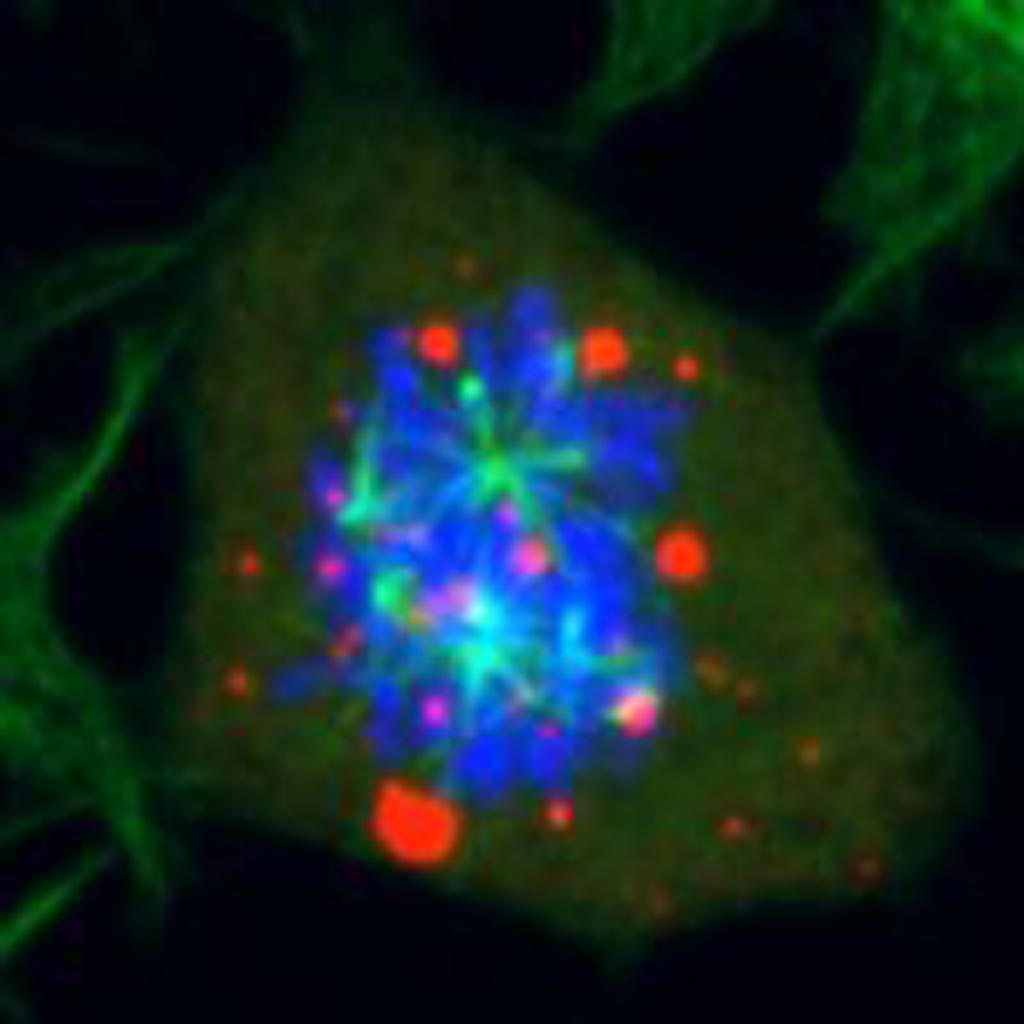Mechanism Regulates Organelle Distribution during Cell Division
By LabMedica International staff writers
Posted on 24 Jul 2018
A team of Swiss cell biologists has discovered how cells maintain the integrity and distribution of cytoplasmic organelles during and following the process of cell division.Posted on 24 Jul 2018
Previous research has shown that liquid–liquid phase separation underlies the formation and disassembly of organelles that lack membranes in cells, but the cellular mechanisms that control this phenomenon are poorly understood. A prominent example of regulated and reversible segregation of liquid phases may occur during mitosis, when this type of organelles disappear upon nuclear-envelope breakdown and reappear as mitosis is completed.

Image: When the enzyme DYRK3 is inhibited, mitotic defects are resulting (red: droplets, green: spindle, blue: DNA) (Photo courtesy of Arpan Rai, University of Zurich).
To better understand this phenomenon, investigators at the University of Zurich (Switzerland) focused their attention on a specific enzyme, the dual-specificity kinase DYRK3 (Dual specificity tyrosine-phosphorylation-regulated kinase 3). This enzyme acts as a central solubilizing agent for several types of membraneless organelles during mitosis.
The investigators reported in the July 4, 2018, issue of the journal Nature that DYRK3 kinase activity was essential to prevent the unmixing of the mitotic cytoplasm into aberrant liquid-like hybrid organelles and the over-nucleation of spindle bodies. DYRK3 promoted the mixing of the liquid phases within the cytoplasm to ensure correct separation of chromosomes and uniform division of the cell's components. Following cell division, the enzyme was denatured and individual phases were reestablished. Failure of the phase separation mechanism to function correctly could result in incomplete chromosome separation and incorrect distribution to the daughter cells, which is a common characteristic of numerous cancers.
"These fundamental findings give us completely new insights into cell division: as a process in which the cell contents mix together and then separate again," said senior author Dr. Lucas Pelkmans, professor of molecular life sciences at the University of Zurich. "Thanks to the discovery as to which proteins control phase separation, new strategies can be pursued to prevent mistakes in this process."
Related Links:
University of Zurich













